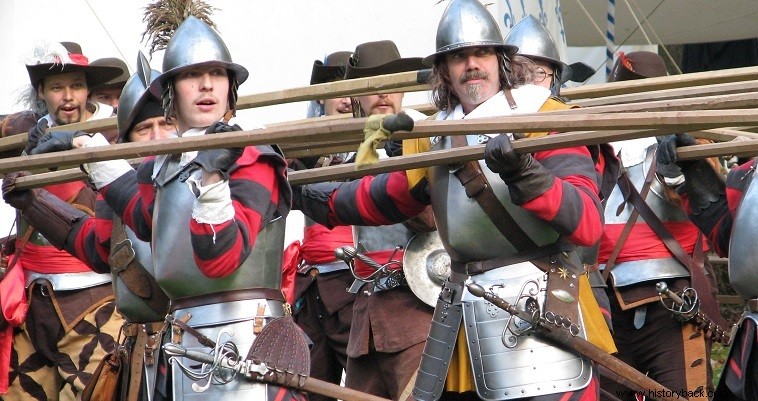
Since 1613, when Mikhail Romanov, the first tsar of the eponymous dynasty, ascended the throne, the question of further modernization of the Russian Army was raised. Already in the preceding 14 years ("the time of trouble," as it is known in Russian history), from 1599 when Ivan's son and successor Feodor died to 1613, when Mikhail Romanov ascended the throne, Russia almost disappeared as a state. After Feodor, Boris Gudunov usurped the throne and became involved in military adventures.
Next came the two pseudo-tsars who were supposed to embody the real Demetrius, the youngest son of Ivan the Terrible, but who had been assassinated in 1591. These two usurpers, relying on Polish and Swedish troops, handed over large parts of Russia to her enemies. , in exchange for their recognition as tsars. The Poles even occupied Moscow itself, from which they were expelled in 1612.
Under these conditions, Mikhail Romanov began to reorganize the Russian Army on the western standards of the time. The Streltsy, the regular infantry corps founded by Ivan the Terrible, for the most part remained loyal to the Russian throne and fought bravely against external enemies. However, the tsar decided that something extra was needed, so in 1630, the first two regiments of "Soldatski" (Soldiers) were formed.
These sections, although they did not officially belong to the Streltsi corps, were in fact a westernized version of them. These two regiments were organized into eight companies, each with 120 musketeers and 80 sarissaries, and into one staff company, with 176 men, including the colonel, a major, chaplains, doctors and auxiliaries. In 1632 four more such regiments were established. In these regiments, initially many foreign officers served.
They gradually moved away and the "Soldatski" regiments were manned exclusively by Russians. Their uniforms were similar to those of the Streltsi. Also, their pay was the same and they were fed in the same way. Their difference with the "brother" regiments of the Streltsi, was in their animate material and in their battle tactics. In the regiments of the "Soldiers" they had the right to rank as boyars, who, however, for various reasons, had lost their property, as well as serfs, who immediately upon their rank, were freed and acquired the right to property.
At the same time, Western-type cavalry regiments (pistol-bearing Reiters) were formed. In these regiments they could also be classified from boyars (nobles) to serfs. The Russian Reiters regiments were very large, each fielding about 2,000 men, organized into 12 islands.
Also, during this period, the first regiment of dragoons was formed, with 12 companies of 120 men each. These dragons were an evolution of the mounted Streltsi. They moved on horseback, but fought on foot. During this period the power of the Streltsi had declined. In all of Russia they numbered only 8,000 men. However, their numbers soon increased again, as Russia had to face opponents both on the west – Poland and Sweden – and on its southeast – Tatars, Turks – borders.
